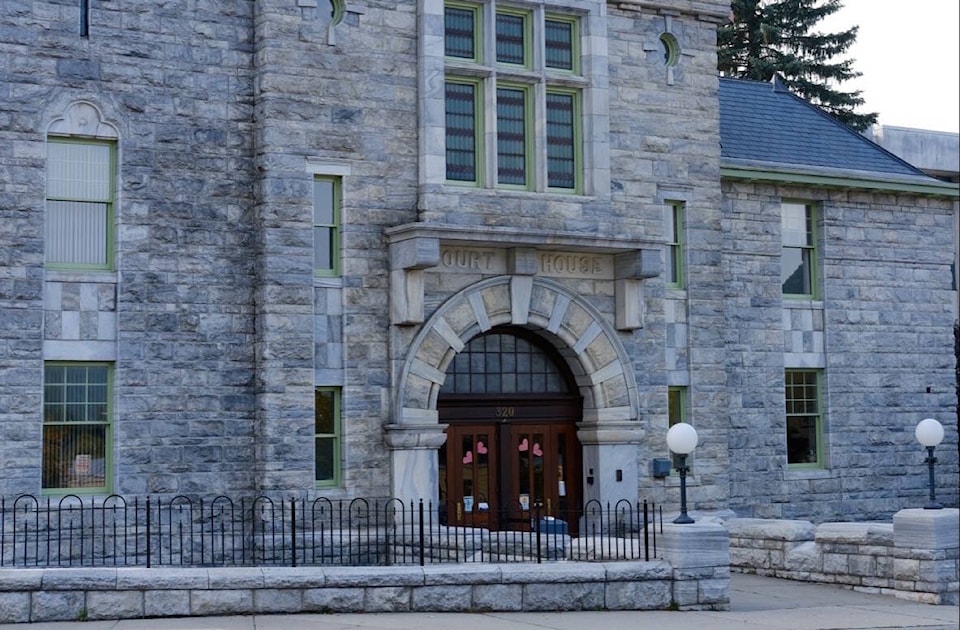A coroner’s jury has made nine recommendations on Oct. 13 in Nelson following an inquest into the death of Peter de Groot at the hands of the RCMP in 2014.
Most of the recommendations are directed at the RCMP, with one recommendation each for the BC Coroner Service and the Independent Investigations Office (IIO), the agency that investigates incidents of injury or death caused by a police officer.
The job of a coroner’s jury is to recommend how a similar death or injury could be avoided in the future, not to assign blame for the death.
De Groot was involved in an altercation with a neighbour and the police on Oct. 9, 2014, at his home in Slocan. Shots were fired and de Groot ran into the woods, armed with a rifle. He was killed by the RCMP in a cabin in the forest four days later.
The IIO ruled in a 2018 report that Brian Burke, the officer who shot de Groot, should not be charged with a criminal offence because he acted in his duty and not with undue force.
The jury heard many days of testimony about the RCMP lockdown of Slocan, the hunt for de Groot, his death, the details of several pathology reports, and the IIO investigation.
The jury’s recommendations to the RCMP
1. Implement appropriate body cameras for all front-line police officers, including emergency response team members.
The only witnesses to de Groot’s death were two then-RCMP officers, Brian Burke and Robert Courcelles, who were not wearing body cameras.
The RCMP is currently a new policy that all officers who interact with the public must wear cameras.
2. Supply and equip advanced first aid kits in all RCMP vehicles.
3. Ensure RCMP members’ first aid and first responder medical training is current.
Burke and Courcelles spoke at the inquest about their limited medical equipment and training.
4. Ensure that police officers have appropriate and functional communication equipment for the area and manner of deployment.
The RCMP testified at the inquest that there was no cell service in the Slocan area and that their police radios had limited range. At the cabin in which de Groot was shot, Burke and Courcelles had no phone or radio contact with anyone.
5. Review the efficiency and effectiveness of full time, regionally based emergency response teams (ERT) vs. part time.
The ERT that came to Slocan consisted of part-time members called in from other RCMP detachments in the province.
6. Review, standardize and make available mental health support programs to ensure information, resources, and mental health professionals are available to assist responding officers where required.
7. Continuously develop and enhance CID (crisis intervention and de-escalation) training as well as IMIM (incident management intervention model) training for all officers.
There were many questions at the inquest about the RCMP’s officers’ effectiveness in managing communications with the community, de Groot, de Groot’s family, and each other.
Recommendations to B.C. Coroners Service and the IIO
8. Inquests should be held in a timely manner, as soon as possible following a death.
In this case the coroner’s office had to wait for the report from the IIO, issued four years after de Groot’s death, before holding an inquest, which was then delayed a further three years.
9. Review current mandate and amend the statute to empower the IIO to make formal recommendations.
Under the current legislation the IIO’s job is to decide whether charges should be laid against an officer, and to explain its reasons for that opinion. The IIO has no power to recommend or order how the police do their job.
In 2016 the de Groot family launched a against the RCMP seeking damages for the death. The legal action had been held in abeyance pending the inquest.
READ MORE:
•
•
•
•
bill.metcalfe@nelsonstar.com
Like us on and follow us on



